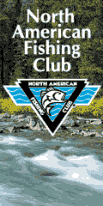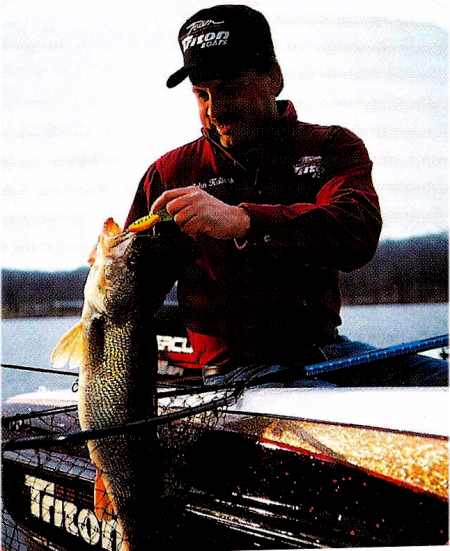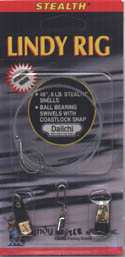
|
|
|
Promotional Team Favorites Lodging food and more 
Free 90 day Risk free trial offer click here 
|
By JOHN KOLINSKI
Editor's note: John Kolinski is an eight-time championship qualifier during his seven years of professional fishing on the Professional Walleye Trail and Masters Walleye Circuit. His articles can be read in a number of publications and at top walleye-fishing sites on-line. It's an interesting dilemma that autumn always brings to the forefront. As a tournament angler, I spend most of the fishing season in pursuit of finicky walleyes with full bellies. Finding them often requires long boat rides that challenge my skeletal structure, and big waves that test my balance and dexterity. When I finally find fish, I'm typically trying to coax a few into biting during a part of the day when they tend to look at my presentations much the way I look at my lawnmower. And then the nights take on a slight chill, the hardwoods begin to change colors and the water cools. Those same trophy walleyes lose many of their inhibitions. They begin moving in traditional directions. They gang up in predictable locations. And they eat anything and everything in sight. Trouble is, many of us are sitting in a tree stand or a duck blind, and missing out on some of the finest fishing the Midwest has to offer.  catch numbers of quality walleyes stands apart from any other time frame. It usually features stable water conditions that spring can't match, as well as fish that are much more willing to forage. Like many outdoor enthusiasts, I can't ignore my passion for hunting ducks and geese. My solution is to throw a couple of rods and reels into the duck hunting boat if waterfowl has captured my imagination for the day, or throw the Flambeau duck decoys into my Triton 205 when I'm focused on catching walleyes. It will still give you the opportunity to try out that new skyscraper decoy by Flambeau. The point is, double your fun. Why settle for one of the season's great sports when you can have two of them? Finding fall walleyes isn't usually difficult. Begin where you found them in the spring. Once the water temp slips below 60 degrees and the photo period loses a couple of hours each day, walleyes in river systems begin to migrate back toward their spawning You can find them ganged up at the mouths of rivers where they empty into lakes, and holding close to rip-rap and structure with deep water nearby. Inside bends in the river channel and even sand flats are other good places to find these fish. In reservoirs and deep, clear-water lakes, walleyes will congregate on primary points, sometimes in water as deep as 40-50 feet. In shallower, dirty-water lakes, they'll also load up on points but can also be taken along rip-rapped shoreline. No matter where you fish and where you find them, they'll be putting on the feedbag trying to build reserves for the rigors of winter. Any number of live bait, crankbait and jig presentations will be effective when matched to the situation. Live bait choices by October and November are usually limited to fathead minnows, shiners and chubs. shoreline. Still, my favorite method for taking fall walleyes is the jig-and-minnow approach. It's also the simplest, which is an advantage when trying to combine a fishing trip with a hunting outing. When the walleyes are aggressive, a quarter-ounce or eighth-ounce hair or bucktail jig flipped along rip-rap, the tips of wingdams and shorelines littered with timber can take numbers of fish. Some of them will be huge. When the fish aren't as anxious to eat, I downsize to a plain jig head and work the edges of the shoreline break instead of the flat on top. There will also be fish stacked at the bottom of the break, but they're usually the ones that have finished feeding and are resting up for another run through the shallows. In my opinion, fall represents the best time for an angler to boat a 10-pound or better walleye. At no other time are they more active or more accessible. What's more, you will likely score on many other species of fish, too. Smallmouth bass, largemouth bass, crappies, northern pike and muskies are doing the same thing the walleyes are doing when autumn arrives -- fattening up for winter. The next time you head out to the duck blind for a morning shoot, throw the fishing gear in the boat. When the mallards stop flying, go catch some walleyes. You don't have to choose between fish and fowl. You can have them both. E-mail John Kolinski Please visit these site sponsors |
|---|---|
